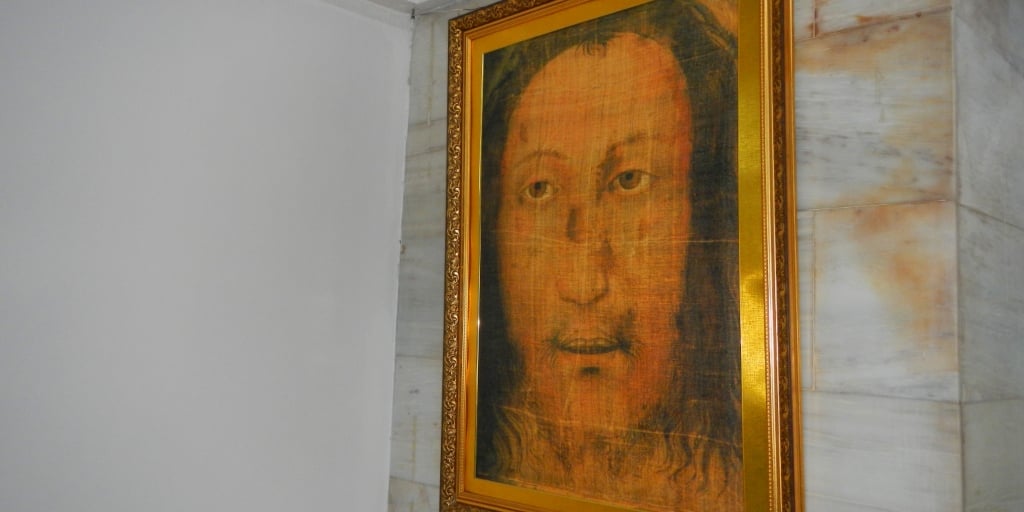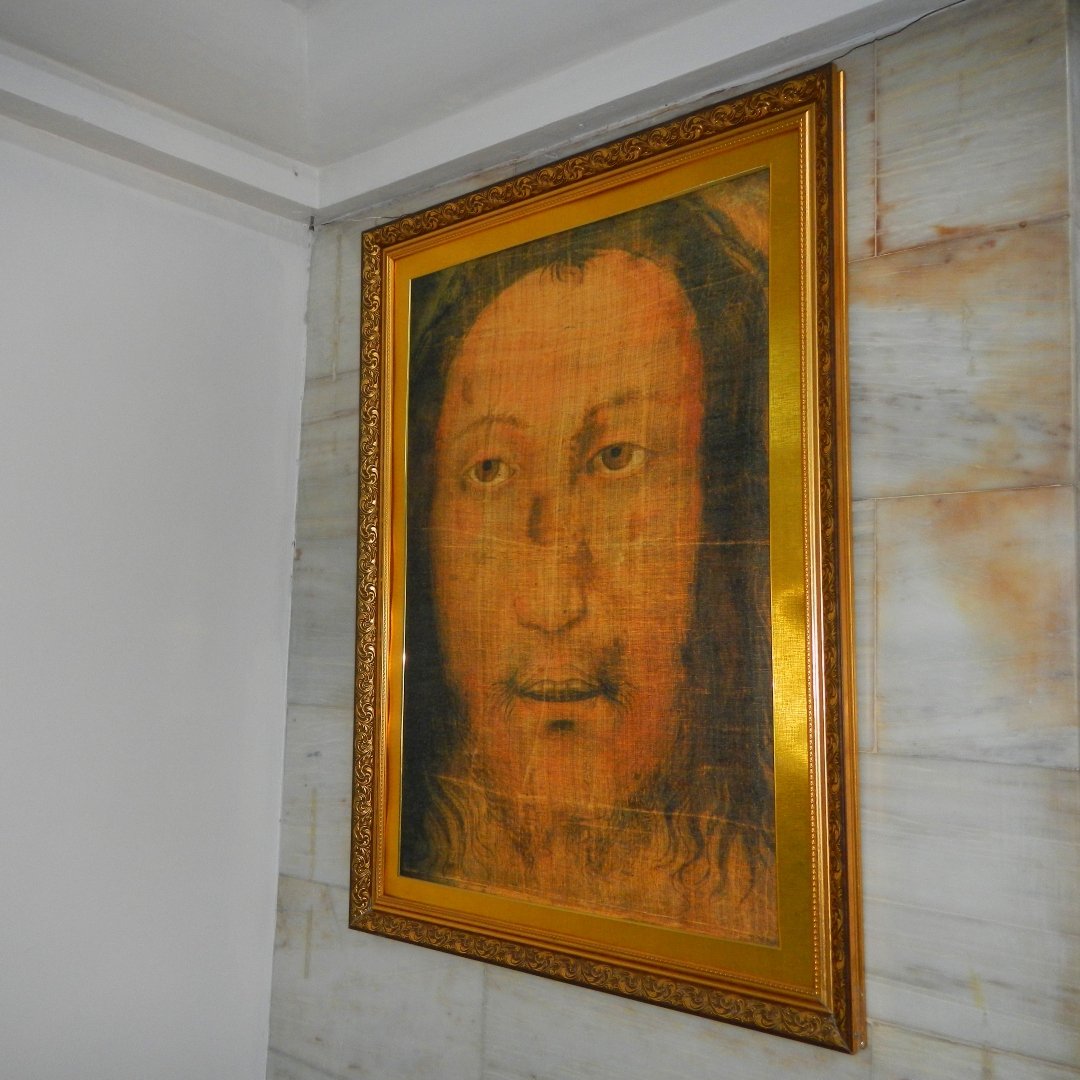
Kathryn Swegart shares a miraculous story about the burial cloth of Jesus.
All was quiet on the morning of January 13, 1915. Ten-year-old Emidio Petracca felt sleepy that day as he climbed the stairs to assist at Mass. Sunlight glistened on the mountains of central Italy, promising a peaceful day at the village. Emidio, dressed in his black cassock and white surplice, held a long-handled crucifix to lead the procession. Partway through Holy Mass, Emidio prepared to ring tiny bells at the consecration. The time was 7:53.
In one shocking minute, an earthquake struck, burying Emidio in piles of rubble. Dirt filled his eyes, mouth, and ears as he struggled to breathe. No one would ever find him. The boy prepared to die.
Suddenly, Emidio heard a scratching sound. He squinted into the dark. A tiny beam of light seeped through cracks, and he saw fingers dig an opening that grew larger. Strong hands picked up rocks until a wide path was cleared.
“Help me,” Emidio said weakly.
“I am coming,” the man replied.
Moments later, Emidio saw the face of his rescuer, a man with long brown hair, short beard, and dark eyes. It was a face like he had never seen before, filled with goodness. The rescuer seemed to know what the boy was thinking.
“No, you will not die. You will live and do great deeds,” he said and then he disappeared.
Indeed, the prediction came true. Emidio became a Capuchin friar, taking the name Domenico da Cese. He served the people of God in the mountainous regions of Italy. Few people knew of his miraculous escape from the earthquake. Emidio seldom spoke of it. One thought preyed on his mind. Who was the mysterious rescuer? He could close his eyes and picture the man’s face. Dear Lord, if only I could have thanked him.
In October 1964, Emidio was invited on a pilgrimage to the little town of Manoppello, Italy. He often heard his brother friars speak of the Church of St. Michael, location of a mysterious relic. Many believed it to be the small cloth placed upon the face of Jesus after he was laid in the tomb. A miraculous image appears on the veil. Many believe it to be the face of Jesus.
Emidio packed his bags and traveled to Manoppello. Upon entering the Church of St. Michael, he saw a case containing the little veil. The reliquary stood high above the altar. Emidio climbed stairs leading to the relic. He reached the top and stared at the veil. A face seemed to gaze at him. It was the image of a man with long hair and short beard. His gentle eyes were open and penetrated Emidio’s heart with a deep spirit of peace. Instantly, Emidio recognized the face. Stunned at the sight, he grasped the railing for support. It was the face of the man who pulled him from the rubble.
Remember back when Lent began? We focused on the passion and death of Jesus. It was an appropriate time to meditate on one of the most famous relics in Christendom. The Shroud of Turin depicts the crucified Christ, asleep in death.
We now near the end of Easter season. Do you know of the Holy Veil of Manoppello? It is also called “the little shroud” or “the resurrection veil.” It shows the face of a man alive, not dead. Venerated quietly by the faithful for centuries, the cloth is thought to be the same cloth found in the empty tomb on that first Easter morning. John the Evangelist described it as “the napkin, which had been on the head, not lying with the linen cloth, but rolled up in a place by itself.” (John 20:7)

The unusual image of Christ has been depicted in art for centuries. Villagers in the hamlet of Manoppello have venerated the veil for 400 years. Over the past few decades, Manoppello had become a destination for pilgrims, popes, saints, and cardinals.
Padre Pio called it “the greatest miracle we have.” Cardinal Sarah visited the site in 2018 and said, “In Manoppello we encounter God face-to face. It is such a moving piece. One is touched by the gentleness of Christ’s eyes, with their penetrating and calming power.”
What happened to Emidio, later known as Franciscan friar Padre Domenico da Cese? He became known as the “Apostle of the Holy Face,” leading pilgrimages to the sacred veil. In 2015, he was declared Servant of God by the Roman Catholic Church.
Copyright 2023 Kathryn Swegart
Images: Judgefloro, Public domain, via Wikimedia Commons
About the Author

Kathryn Swegart
Kathryn Griffin Swegart is an award-winning author of Catholic books for children. Kathryn and her husband raised three children on a small farm in rural Maine. She is a professed member of the Secular Franciscan Order and contributor to Magnificat. Visit her website at KathrynSwegart.com.


.png?width=1806&height=731&name=CatholicMom_hcfm_logo1_pos_871c_2728c%20(002).png)
Comments